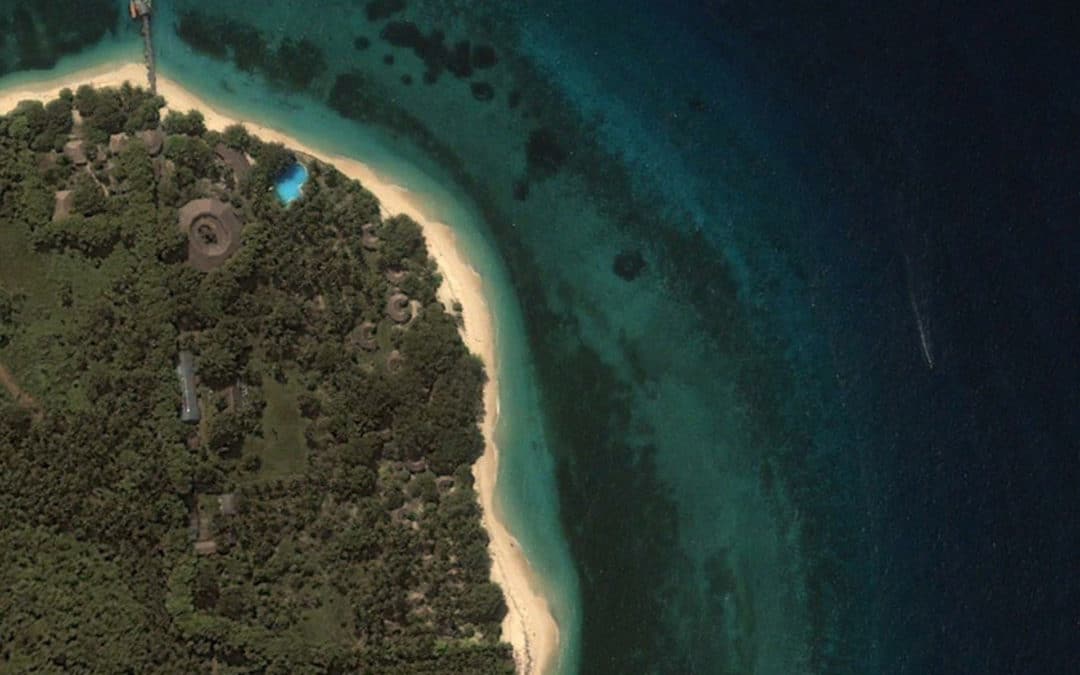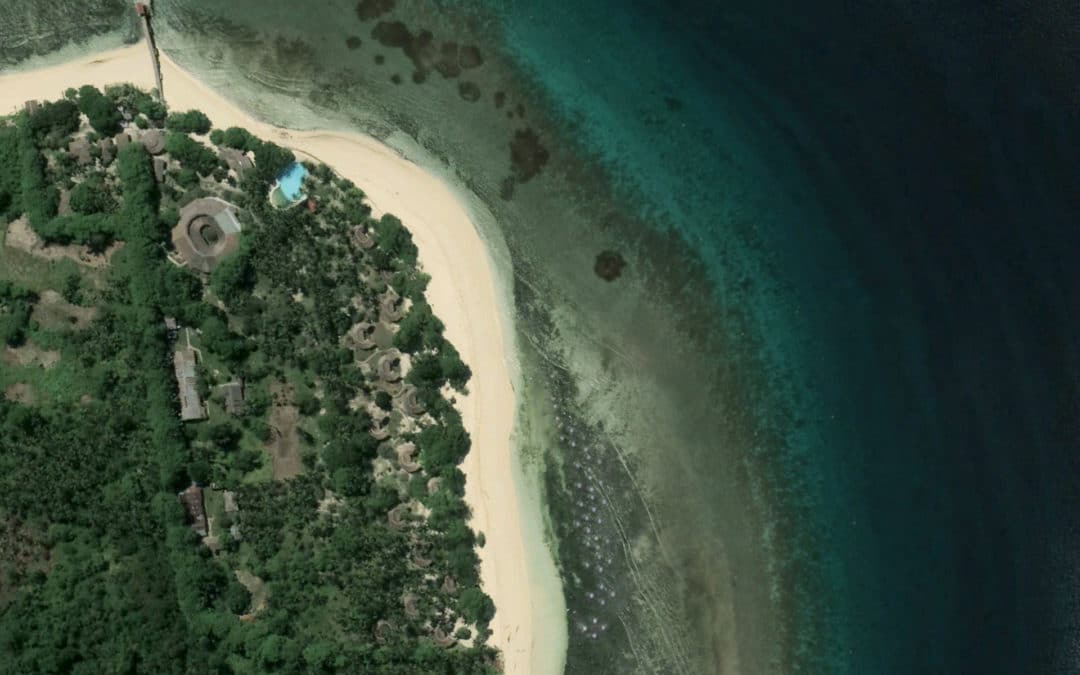Coastal Protection
& Beach Restoration
Erosive Energy of Waves
Shorelines are always changing because
of wind and water
Waves can wear away the land and expose a rocky shore or the waves can deposit sand along the shore and form a beach. If the waves reach the beach at an angle, the sand is moved along the coast.
Inefficient traditional solutions
Today’s beach restoration and protection methods are costly and often ineffective.
Breakwaters and seawaters experience erosion at their bases and in unprotected areas, calling for constant sand replenishment and even collapsing over time. They prompt a series of small beaches to form and create complications for swimming and breaking waves. In addition to water stagnation, their environmental and visual impact make them an inadvisable solution.
Artificial beach nourishment is a temporary solution, requiring new sand to be added regularly, thus generating very high recurring costs. It also leads to new erosion issues at the “donor” beaches.
In light of this scenario, new technologies must be introduced to lower costs and improve efficiency while also preventing the degradation of the marine ecosystem.
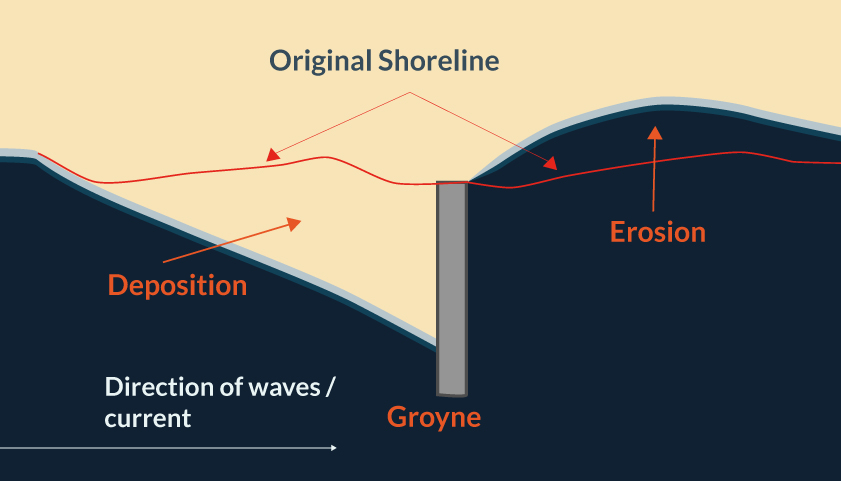
Traditional solutions
Groynes
Breakwaters
Dredging
Groynes
Groynes are structures that are placed perpendicular to the coastline. Their purpose is to block the movement of sediment parallel to the coastline. Therefore, their effectiveness relies, first of all, on the existence of a known magnitude and direction of sand movement.
- By limiting the movement of sediment, a lack of sediment is created in nearby unprotected areas, thus increasing erosion there.
- Limiting the ability of the water to circulate can lead to complications in swimming areas, particularly in relation to pollution.
- The erosive side of the jetty must be protected with some kind of coating.
- The strong undertow currents that form in relation to these structures end up eroding the sand they are trying to contain, ultimately requiring ongoing artificial sand fill work.
Breakwaters
Breakwaters act as an obstacle to the direct action of the highest waves by dissipating most of their energy onto the structure. However, smaller waves reach the beach virtually uninterrupted, so that coastal circulation is similar to when there are no structures in place.
And while their upkeep costs are low, involving the replacement of certain elements, this system is less effective after extreme events and also entails numerous disadvantages.
- The movement of sediment from the exposed area to the protected area causes local receding, which may be problematic (depending on the width of the beach, presence of dunes, etc.).
Wave diffraction at the breakwater head and the interrupted longitudinal movement of sediment causes salients and, sometimes, tombolos to form, leading the coast to look like a series of pocket beaches. - Erosion at the breakwater base (particularly at the heads).
- Water stagnation in the protected area behind the breakwater can also cause environmental health issues, especially during the summer season.
- High environmental impact in terms of negative effects on the landscape.
- Limited effect on wave action when there are significant variations in tides.
Dredging
In order to provide beaches with materials (sand and pebbles) that are exogenous to the littoral cell, excavator shovels are used to spread sediment along the beach. And while replenishment can take place as needed or regularly (at the end of winter, for example), an extensive analysis of nature and the elements affecting it is required for each action, as well as knowledge about the average annual rate of retreat of the coastline.
- A nearby location is needed for storage of large volumes of extract materials so that replenishing operations can be performed frequently.
- Good quality sand or pebbles are essential (to avoid filling with contaminated sediment or finer sediment than that found on the nourished beach).
- Some situations are not suited to these methods (strong waves, limited access, sand grades, etc.).
- Replenishing with pebbles is less common due to the fact that the technical resources are heavier and more expensive.
- Dredging and dumping may lead to imbalances in local biodiversity in the extract and deposit zones (habitat destruction, increased water turbidity, etc.).
How does Biorock® solve the problem?
The only effective alternative for coastal protection is to mimic Nature’s best method of shore protection and beach growth, coral reefs in the tropics and oyster reefs in cold water.
Biorock® structures refract waves instead of reflecting them, absorbing the energy of waves passing through them so that when they reach the shore they deposit sand instead of eroding it.
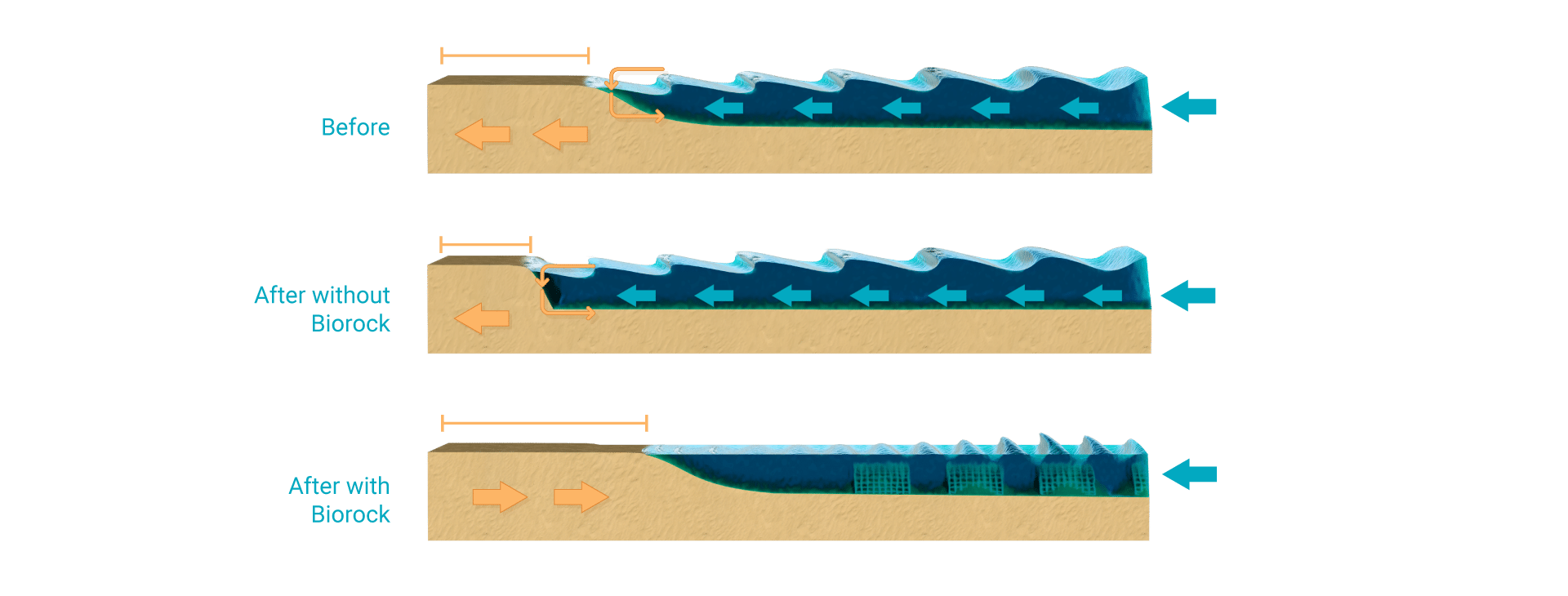
Main advantages
- Possibility of powering the structures with wave energy: the stronger the waves are, the more energy they generate and the faster the structures will grow, thus making them more effective against erosion.
- Versatility for the creation of underwater structures of any size and shape.
- Logistical advantages linked to the installation procedure.
- Low environmental impact.
- They adapt to increases in sea level because the structure can lead the coast to rise in height by some 20 mm/year.
- The electrical field attracts marine animals and encourages the symbiotic growth of coral and algae.
- Generation of highly diverse marine ecosystems that feed themselves.
- Low impact on the aesthetics of the horizon without spoiling the nature of the landscape.
Pulau Gangga, Indonesia
Gangga Island is part of an archipelago that connects Indonesia with the Philippines. The strait that separates Gangga from Sulawesi links the Pacific Ocean with the Indian Ocean and is one of the most biodiverse places in the world.
The formerly wide sand beach had largely washed, leaving an erosion cliff about 1.36 m high along the shore.
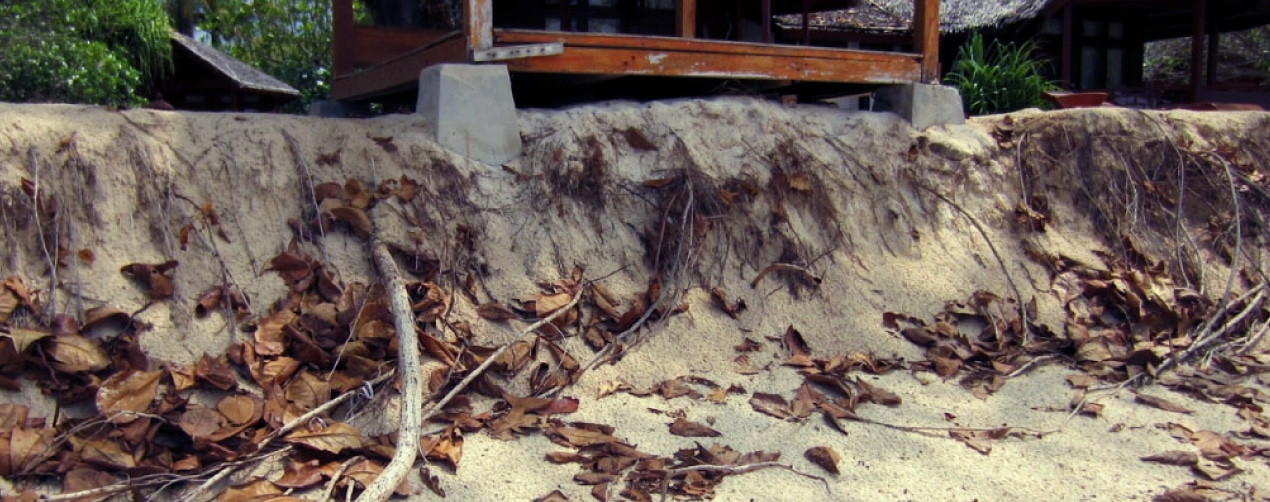
48 Biorock Anti Wave reefs were deployed in the sea grass beds in front of the eroding beach.
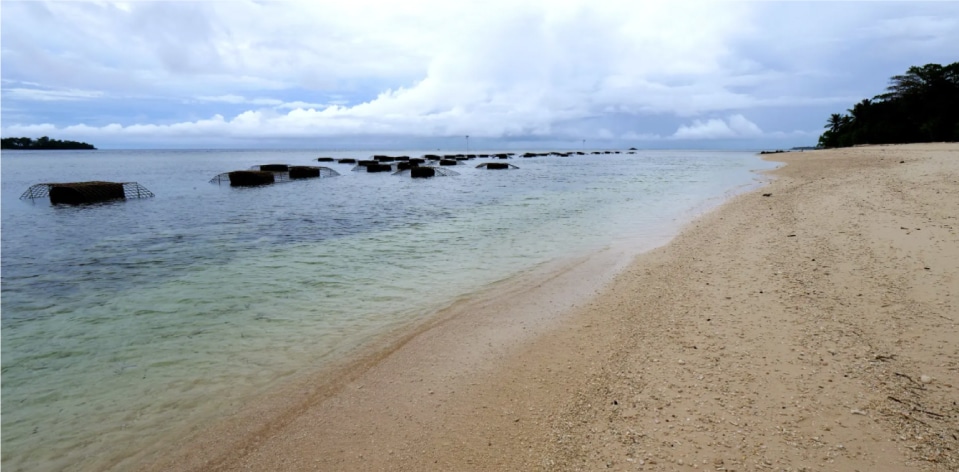
Over the course of a year the beach has increased in height by more than a meter, and in width by more than 15m, over a two hundred meter length.
